JR Usherwood
The collisional geometry of economical walking predicts human leg and foot segment proportions
Usherwood, JR
Authors
Abstract
Human walking appears complicated, with many muscles and joints performing rapidly varying roles over the stride. However, the function of walking is simple: to support body weight as it translates economically. Here, a scenario is proposed for the sequence of joint and muscle actions that achieves this function, with the timing of muscle loading and unloading driven by simple changes in geometry over stance. In the scenario, joints of the legs and feet are sequentially locked, resulting in a vaulting stance phase and three or five rapid 'mini-vaults' over a series of 'virtual legs' during the step-to-step transition. Collision mechanics indicate that the mechanical work demand is minimized if the changes in the centre-of-mass trajectory over the step-to-step transition are evenly spaced, predicting an even spacing of the virtual legs. The scenario provides a simple account for the work-minimizing mechanisms of joints and muscles in walking, and collision geometry allows leg and foot proportions to be predicted, accounting for the location of the knee halfway down the leg, and the relatively stiff, plantigrade, asymmetric, short-toed human foot.
Citation
Usherwood, J. (2023). The collisional geometry of economical walking predicts human leg and foot segment proportions. Journal of the Royal Society, Interface, 20(200), https://doi.org/10.1098/rsif.2022.0800
| Journal Article Type | Article |
|---|---|
| Acceptance Date | Mar 3, 2023 |
| Publication Date | 2023 |
| Deposit Date | Jun 19, 2024 |
| Publicly Available Date | Jun 19, 2024 |
| Journal | Journal of the Royal Society, Interface |
| Print ISSN | 1742-5689 |
| Electronic ISSN | 1742-5662 |
| Publisher | The Royal Society |
| Peer Reviewed | Peer Reviewed |
| Volume | 20 |
| Issue | 200 |
| DOI | https://doi.org/10.1098/rsif.2022.0800 |
| Keywords | gait; leg; walk; knee; ankle; toe; MUSCLE CONTRIBUTIONS; DYNAMIC SIMULATIONS; SUPPORT; OPTIMIZATION; EVOLUTION; MODEL; GAITS; PROGRESSION; LOCOMOTION; BEHAVIOR |
Files
The Collisional Geometry Of Economical Walking Predicts Human Leg And Foot Segment Proportions
(590 Kb)
PDF
Licence
http://creativecommons.org/licenses/by/4.0/
Publisher Licence URL
http://creativecommons.org/licenses/by/4.0/
Version
VoR
You might also like
Investigation of models to estimate flight performance of gliding birds from wakes
(2024)
Journal Article
The functions of leg muscles, structures and mechanisms in running
(2024)
Journal Article
Dynamics of hinged wings in strong upward gusts
(2023)
Journal Article
Usherwood 27Jul2021
(2022)
Journal Article
Downloadable Citations
About RVC Repository
Administrator e-mail: publicationsrepos@rvc.ac.uk
This application uses the following open-source libraries:
SheetJS Community Edition
Apache License Version 2.0 (http://www.apache.org/licenses/)
PDF.js
Apache License Version 2.0 (http://www.apache.org/licenses/)
Font Awesome
SIL OFL 1.1 (http://scripts.sil.org/OFL)
MIT License (http://opensource.org/licenses/mit-license.html)
CC BY 3.0 ( http://creativecommons.org/licenses/by/3.0/)
Powered by Worktribe © 2025
Advanced Search
